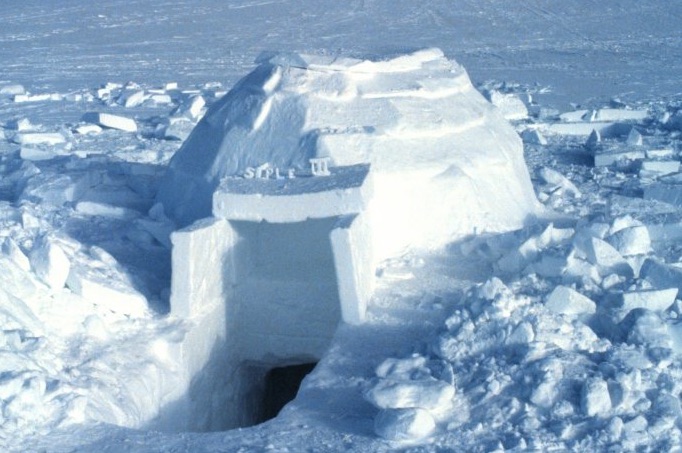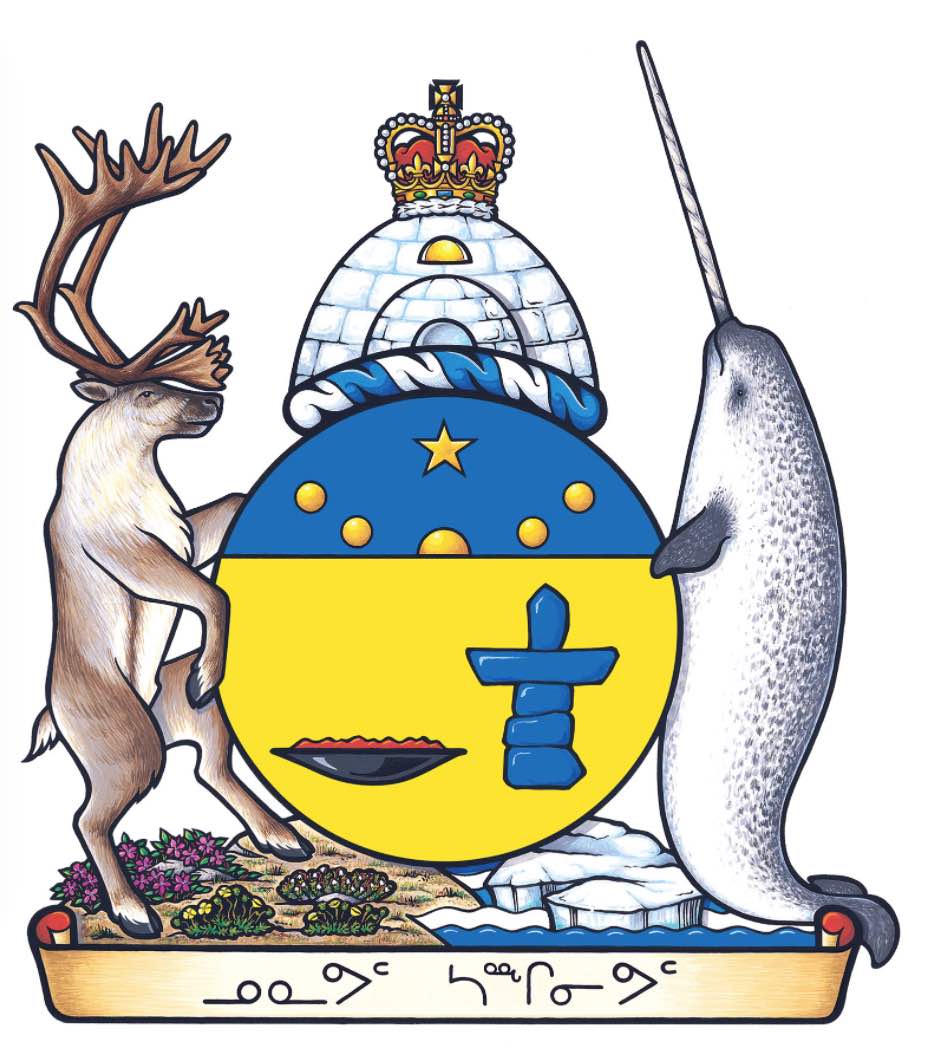Quick links
igloo
[< Inuktitut iglu 'dwelling, house']
DCHP-2 (Oct 2010)
1an. & adj. — originally Indigenous, Inuit
a domed structure built of blocks of hard snow (see Images 1 & 2).
Type: 1. Origin — The term refers to one form of original housing of the Inuit peoples that has come to be stereotypically associated with them by Qalunaat people, i.e. non-Inuits. Note how the the 1771 quotation specifies the kind of house that is mentioned. In the crest of the Territory of Nunavut, the igloo symbolizes the gathered legislative assembly (see the 1999 quotation, see Image 3).
The spelling iglu is still used today in Nunavut newspapers, but is second to igloo (in case of Nunatsiaq Online, the ratio is 476:71 for igloo vs. iglu, 18 Nov. 2016).
See also Gage-5, which marks the term "Cdn" and ITP Nelson and COD-2, whose etymological notes identify Inuktitut as the source.
The spelling iglu is still used today in Nunavut newspapers, but is second to igloo (in case of Nunatsiaq Online, the ratio is 476:71 for igloo vs. iglu, 18 Nov. 2016).
See also Gage-5, which marks the term "Cdn" and ITP Nelson and COD-2, whose etymological notes identify Inuktitut as the source.
Quotations
1771
[Yes, veritably made of snow, without either stone or wood -- this house the indians call aneo-iggilo, which litterally is snow house.]
1832
Average thermometer, --35°. Very sharp; were obliged to get iglou porches (made of hardened snow) to the dwelling houses. which made them much warmer.
1864
During the last few years Esquimaux live almost entirely in igloos--"snow-houses"--through the winter season.
1958
The domed igloo of the Eskimo is a familiar picture to most Canadians -- yet only about one-third of Canada's Eskimos live in igloos.
1974
But the jobs often turned out to be temporary as projects were completed. Many Eskimos began living on welfare payments rather than give up the newly acquired tastes that made them reluctant to return to the igloo village on the frozen tundra, the fishing hole cut through the ice, the trap line and caribou trails in the snow.
1988
Past the tepee, the log cabin, and the large snow house (no-one seems to say igloo anymore)[...]
1997
They heated in the traditional way, burning seal fat in a lamp or kudlik. Even in -41 C temperatures, these heated the igloos comfortably above freezing, just warm enough to glaze the interior with an ice film, sealing out the wind.
1999
THE COAT OF ARMS OF NUNAVUT
In the crest, the igluit (igloo) represents the traditional life of the people and the means of survival. It also symbolizes the assembled members of the Legislature meeting together for the good of Nunavut; with the Royal Crown symbolizing public government for all the people of Nunavut and the equivalent status of Nunavut with other territories and provinces in Canadian Confederation.
In the crest, the igluit (igloo) represents the traditional life of the people and the means of survival. It also symbolizes the assembled members of the Legislature meeting together for the good of Nunavut; with the Royal Crown symbolizing public government for all the people of Nunavut and the equivalent status of Nunavut with other territories and provinces in Canadian Confederation.
2008
Snowmobiling across the open tundra, we meet a hunter who is preparing fresh ptarmigans to "pluck and fry up."
"We call this a pana -- a snow knife," explains Inuk guide, Joseph Kidlapik, later as we bundle up to learn all about igloo building. "Panas used to be made from whale bone or caribou antler, but I bought this metal knife at the co-op," he says with a shy smile.
Joseph, a soapstone artist and handyman, along with his wife Mary, who teaches traditional sewing at the local school, have joined us to share some of their Inuit traditions and customs.
2016
A Baffin Island hunter and community leader who was bitten by the photography bug about 14 years ago—taking a picture of a wasp—will soon have a photograph on the tail of a First Air plane.
Niore Iqalukjuak made it official Sept. 9 when he announced to his many Facebook friends and fans that a photo he took of an iglu lit from the inside, and haloed above with northern lights, will be featured on a First Air ATR 42-500 series aircraft.
“To have that kind of a canvas for your pictures that travels here and there, and for people to see, it’s something I’ve wanted for years,” said Iqalukjuak, a native of Arctic Bay who is currently living in Clyde River.
1bn. — Aboriginal (Inuit), rare
any other Inuit house, except the tent, or tupek.
Type: 1. Origin — This meaning of the term is virtually unknown south of 60 and has thus become rare in comparison to meaning 1a. As the 1938 and 1958 quotations show, for instance, the specialization to the snow house is a non-Inuit semantic narrowing.
See: tupek
Quotations
1824
The natives term them, as well as the whole island, Igloolik; and Igloo being a house, the huts may have been the means of naming the country.
1885
In summer the Eskimos live in conical skin tents, and in winter in half underground huts (igloos) built of stone, turf, earth, etc., entered by a long tunnel-like passage which can only be traversed on all fours.
1902
And an Epicurus, in the dirt-igloo of the Eskimos, will wax eloquent over the whale oil and walrus blubber, or die.
1916
There still remain at Hebron, Okkek, and Killinek old stone iglus roofed with turf, some of which are inhabited.
1938
The igloos are made of rough wooden poles, and covered with reindeer skins.
1958
Many people are still under the impression that Eskimos live in "igloos." Actually, the word igloos to an Eskimo means any type of home which cannot be moved -- a snow house or a wooden one.
References
- Gage-5
- ITP Nelson
- COD-2
Images
Image 1: Schematic drawing of an igloo from DCHP-1.

Image 2: An igloo. Source: Wikimedia Commons. Public domain photo
